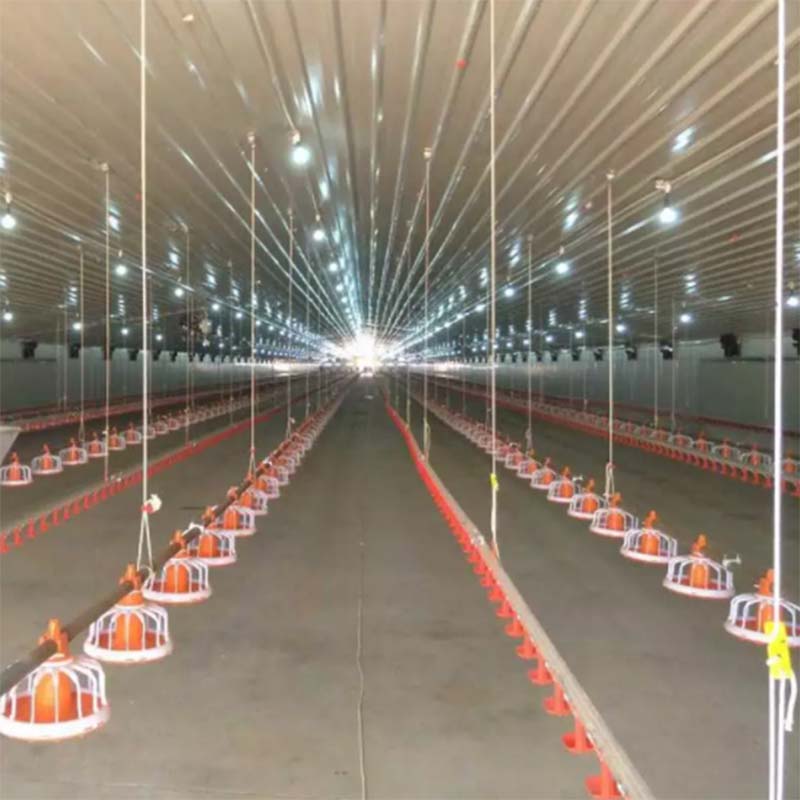Transport Solutions for Poultry Cages Efficiently Moving Birds with Care and Safety
Oct . 13, 2024 16:18 Back to list
Transport Solutions for Poultry Cages Efficiently Moving Birds with Care and Safety
Understanding the Importance of Poultry Transport Cages
In the poultry industry, the safe and humane transportation of birds is crucial for both animal welfare and operational efficiency. Poultry transport cages play a significant role in this process, ensuring that chickens, turkeys, and other birds are securely housed during transit. This article explores the various aspects of poultry transport cages, their designs, benefits, and the regulations surrounding them.
Design and Features of Poultry Transport Cages
Poultry transport cages are specifically engineered to accommodate the unique needs of birds during transportation. The design typically allows for maximum ventilation, which is vital for maintaining the birds’ comfort and minimizing stress. Cages are often made from durable materials such as plastic or galvanized steel, which can withstand the rigors of transport while providing adequate protection for the birds.
Most transport cages come with slotted bases or mesh floors to facilitate drainage, ensuring that waste does not accumulate and create unsanitary conditions. Furthermore, these cages are designed to be stackable, maximizing the space available in transport vehicles. This feature is particularly important in commercial operations, where maximizing efficiency and minimizing costs are paramount.
Benefits of Using Poultry Transport Cages
1. Animal Welfare The primary benefit of using poultry transport cages is the enhancement of animal welfare. Properly designed cages reduce stress during transportation by providing a secure and comfortable environment. Birds that are transported in well-ventilated, spacious cages are less likely to experience injury or distress, which can impact their health and productivity.
2. Biosecurity Poultry transport cages help mitigate the risk of disease transmission during transport. By minimizing direct contact between birds from different farms or regions, transport cages serve as a biosecurity measure. Many cages are designed for easy cleaning and disinfection, further reducing the risk of spreading pathogens.
poultry transport cage

3. Regulatory Compliance Various national and international regulations outline requirements for the transportation of livestock, including poultry. Using transport cages that comply with these regulations helps producers avoid legal issues and ensures that they are upholding best practices in animal care.
4. Economic Efficiency Efficient transport of poultry can lead to reduced costs. By utilizing cages that optimize loading capabilities and ensure that birds remain healthy throughout transit, producers can minimize losses due to mortality or stress-related health issues.
5. Traceability and Identification Modern poultry transport cages can include features for tracking and identification. RFID tags or QR codes can be incorporated into the designs, allowing producers to monitor the transport process and ensure traceability of the birds from farm to market.
Regulations and Best Practices
The transportation of poultry is subject to numerous regulations aimed at protecting animal welfare. Organizations such as the World Organisation for Animal Health (OIE) and various governmental bodies have established guidelines for the transportation process. These guidelines stipulate requirements related to cage size, ventilation, and the duration of transport.
Producers are encouraged to follow best practices when using poultry transport cages, such as ensuring that all birds are healthy prior to loading, avoiding overcrowding in cages, and regularly monitoring conditions during transit. Additionally, proper training for personnel involved in the transportation process is essential for adhering to welfare standards.
Conclusion
Poultry transport cages are a vital component of the poultry supply chain, affecting animal welfare, operational efficiency, and compliance with regulations. By investing in high-quality transport cages, producers can not only enhance the well-being of their birds but also contribute to the overall productivity and sustainability of their operations. As the poultry industry continues to evolve, innovations in cage design and technology will undoubtedly play an important role in ensuring that animal welfare remains a priority throughout the transportation process. Ultimately, the implementation of effective poultry transport cages reflects a commitment to ethical practices within the agricultural sector, benefiting both producers and consumers alike.
-
Automatic Feeding Line System-Pan Feeder Nipple Drinker|Anping County Yize Metal Products Co., Ltd.
NewsJul.29,2025
-
Hot Sale 24 & 18 Door Rabbit Cages - Premium Breeding Solutions
NewsJul.25,2025
-
Automatic Feeding Line System Pan Feeder Nipple Drinker - Anping County Yize Metal Products Co., Ltd.
NewsJul.21,2025
-
Automatic Feeding Line System Pan Feeder Nipple Drinker - Anping County Yize Metal Products Co., Ltd.
NewsJul.21,2025
-
Automatic Feeding Line System - Anping Yize | Precision & Nipple
NewsJul.21,2025
-
Automatic Feeding Line System - Anping Yize | Precision & Nipple
NewsJul.21,2025






